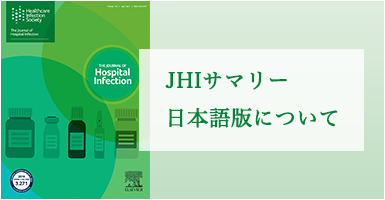手指消毒製品の2種類の皮膚忍容性の評価法を比較するフィールド試験
Field test comparison of two dermal tolerance assessment methods of hand hygiene products
R. Girard*, E. Carre, S. Pires-Cronenberger, M. Bertin-Mandy, M.C. Favier-Bulit, C. Coyault, S. Coudrais, M. Billard, A. Regard, A. Kerhoas, M.L. Valdeyron, B. Cracco, P. Misslin
*Hospices Civils de Lyon, France
Journal of Hospital Infection (2008) 69, 181-185
本研究の目的は、フィールド試験に適した予備試験法を選択するために、手指消毒製品に対する2種類の皮膚忍容性の評価法の感度および作業負荷を比較することである。志願した病院の12部門で、観察者評価法と自己評価法を比較した(2005年から2006年の秋・冬)。2週間の休止期間を挟む3回の3週間の調査期間に、ルーチンで日常使用している製品を再導入した。観察者評価法では、乾燥と過敏性を4点スケールで採点した。自己評価法では、使用者が外観、無傷性、保湿性、および感覚を、ビジュアルアナログスケール(VAS)を用いて10点の数値スケールに換算して評価した。11種類の製品(石けん)を調べた(観察者評価では250件中223件、自己評価では251件中131件で完全な報告が得られた)。忍容性は観察者評価では2種類の製品、自己評価では4種類の製品が、ルーチンで使用している製品よりも有意に低かった。製品を忍容性で分類したところ、2種類の評価法の結果に有意差は認められなかった(Fisher検定P=0.491)。両評価法に共通の症状(乾燥)は、2種類の評価法の間で強い相関が認められた(Spearmanの順位相関係数の検定P=0.032)。作業負荷は観察者評価法のほうが大きかった(作業時間は観察者288時間+予防チームおよび薬剤師122時間に対して、自己評価法では予防チームおよび薬剤師152時間)。結論として、自己評価法のほうが予備試験に適していると考えられたが、完全回答された自己評価票の回収率が低いため、回答者への啓発活動にさらに多くの時間を充当するべきである。
サマリー 原文(英語)はこちら
同カテゴリの記事
Clinical predictors and outcomes of Klebsiella pneumoniae bacteraemia in a regional hospital in Hong Kong
Predisposing factors, disease progression and outcome in 430 prospectively followed patients of healthcare- and community-associated Staphylococcus aureus bacteremia
Genomic epidemiology of Corynebacterium striatum from three regions of China: an emerging national nosocomial epidemic
X. Wang*, H. Zhou, P. Du, R. Lan, D. Chen, A. Dong, X. Lin, X. Qiu, S. Xu, X. Ji, M. Li, X. Hou, L. Sun, D. Li, L. Han, Z. Li
*Chinese Center for Disease Control and Prevention, China
Journal of Hospital Infection (2021) 110, 67-75
Lowbury Lecture 2005: infection control from a global perspective
サイト内検索
アーカイブ
-
2024年
- ・ 1月(24)



